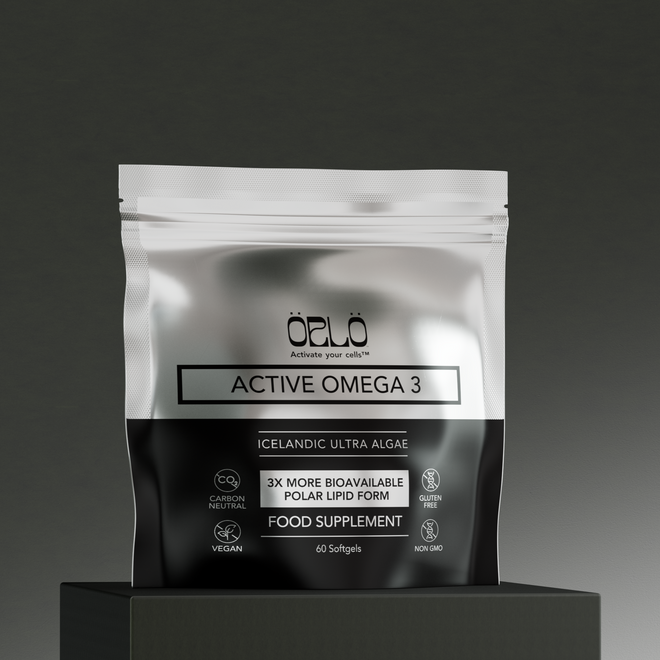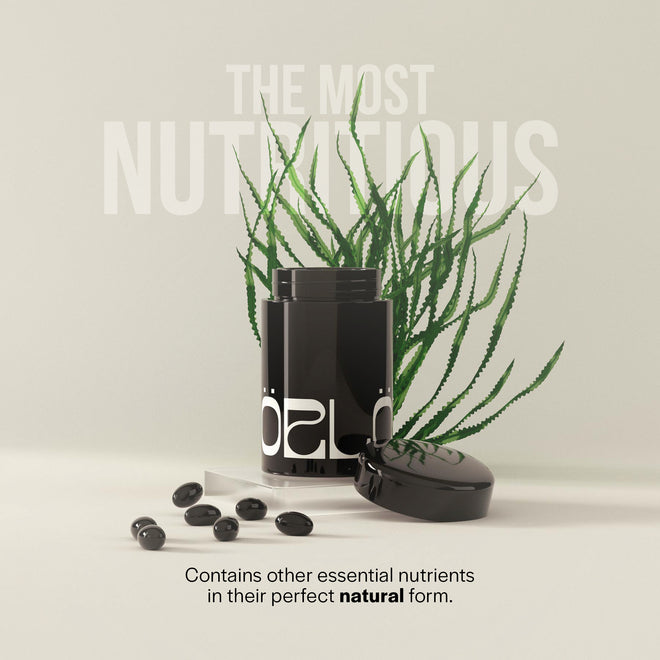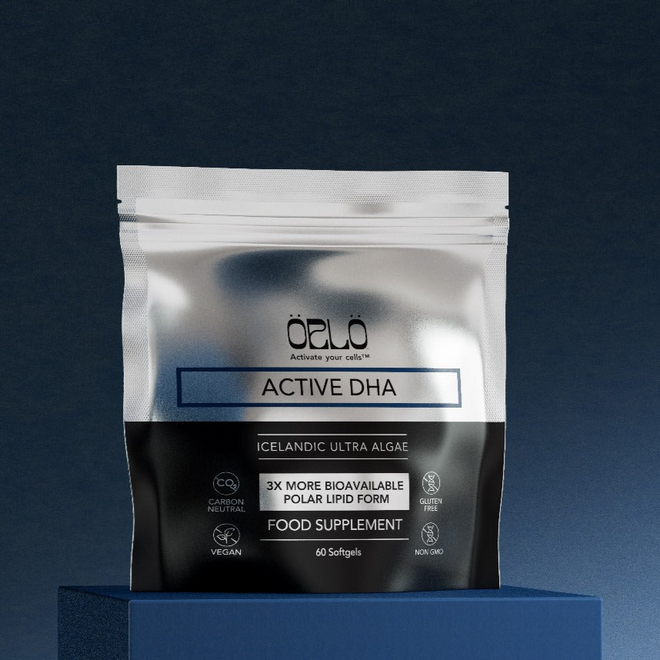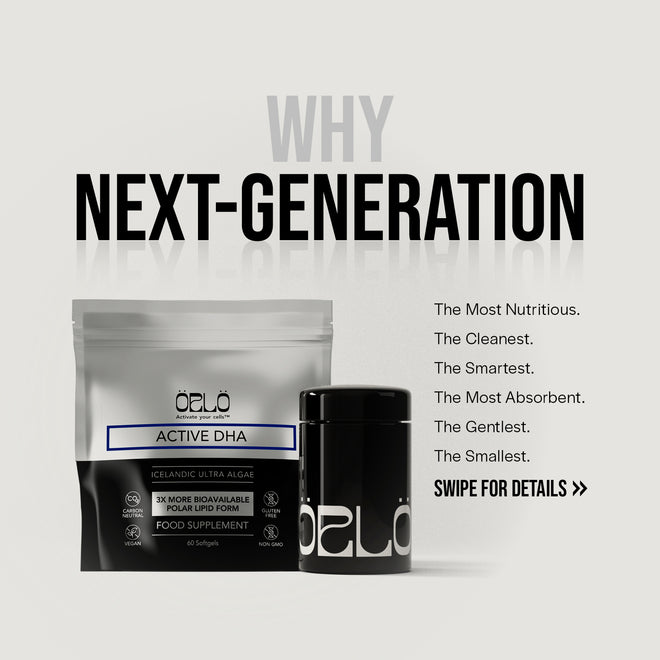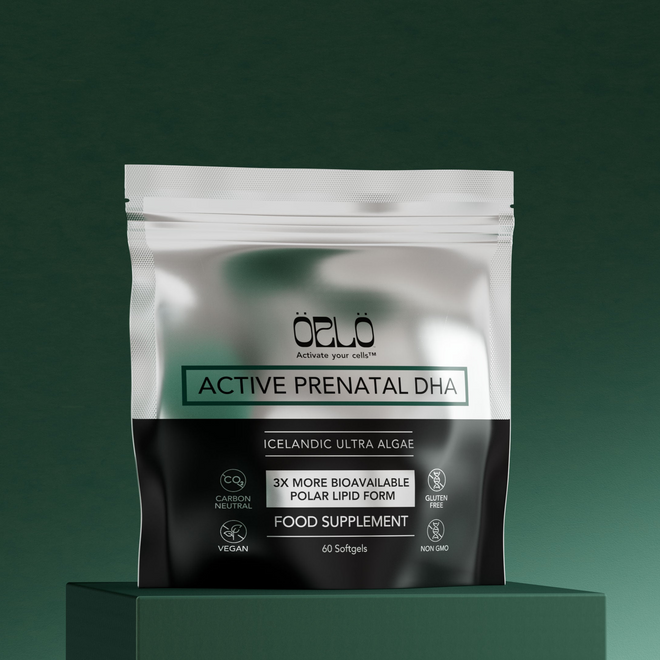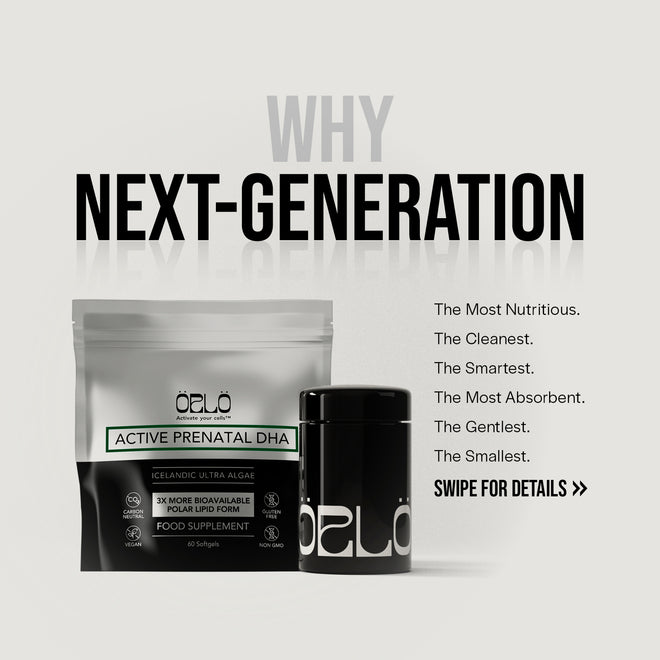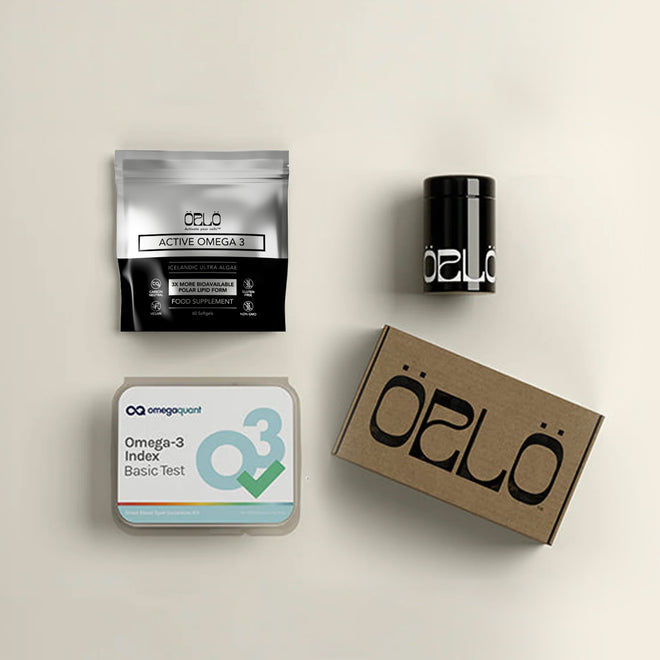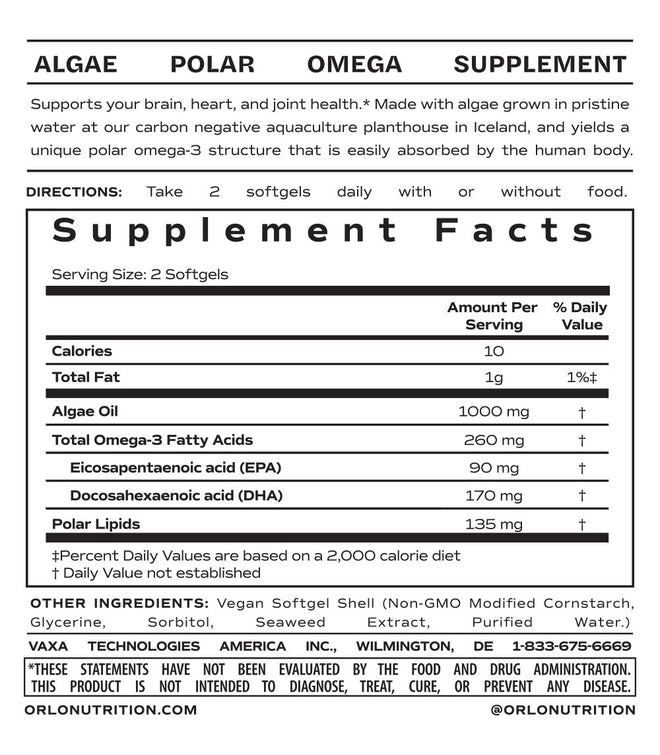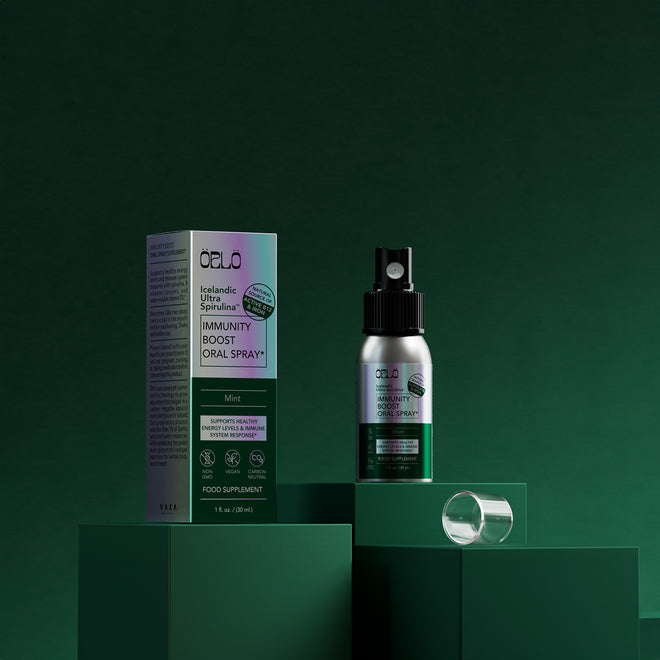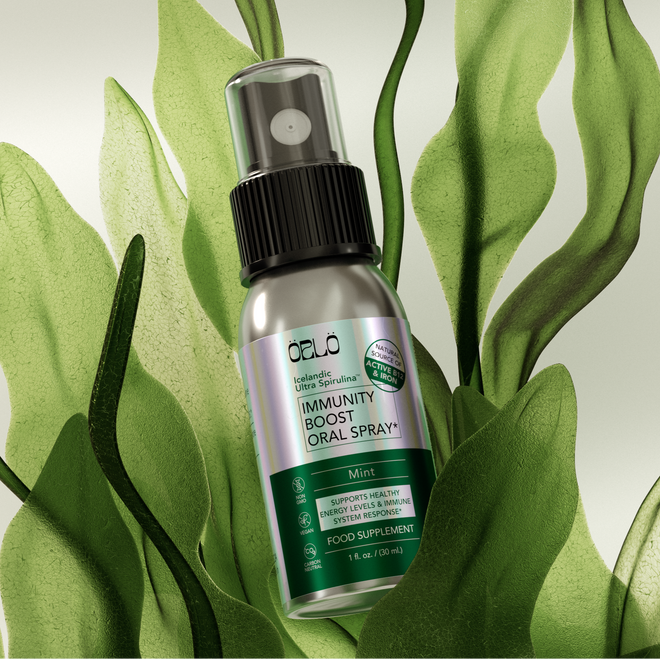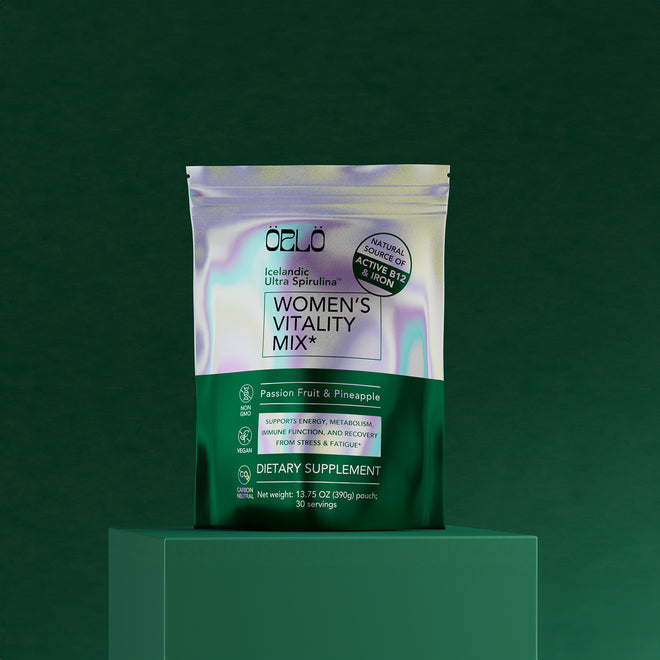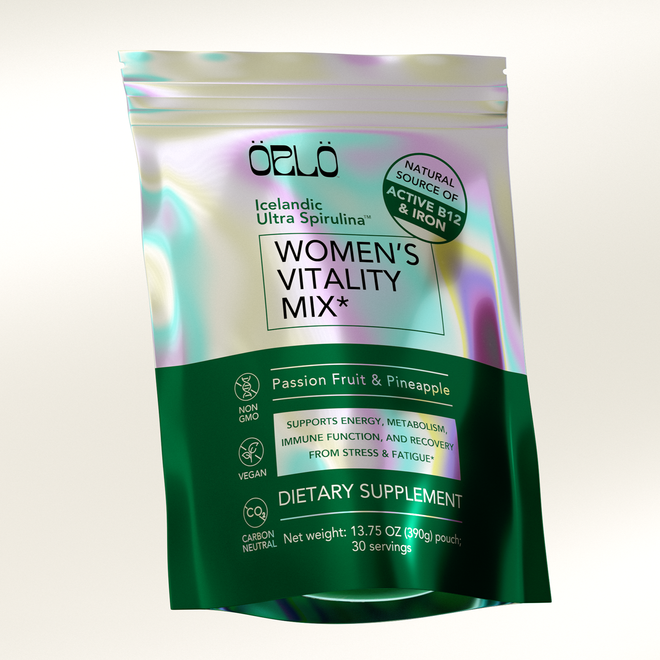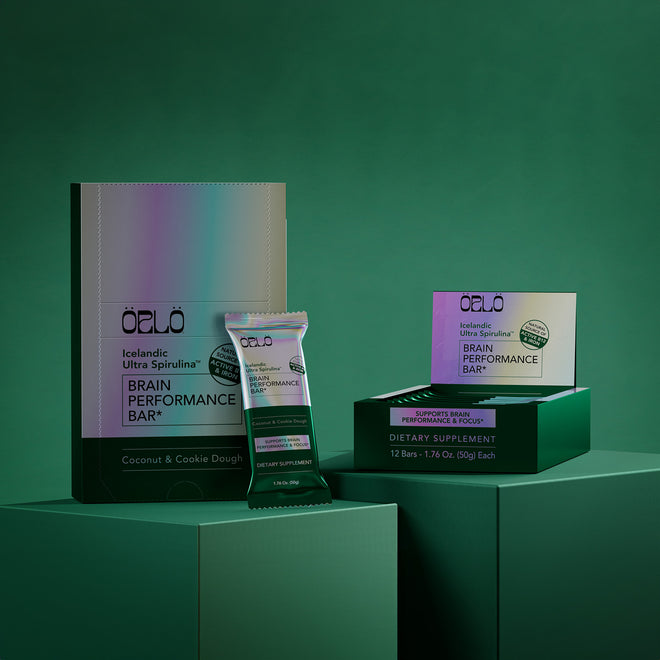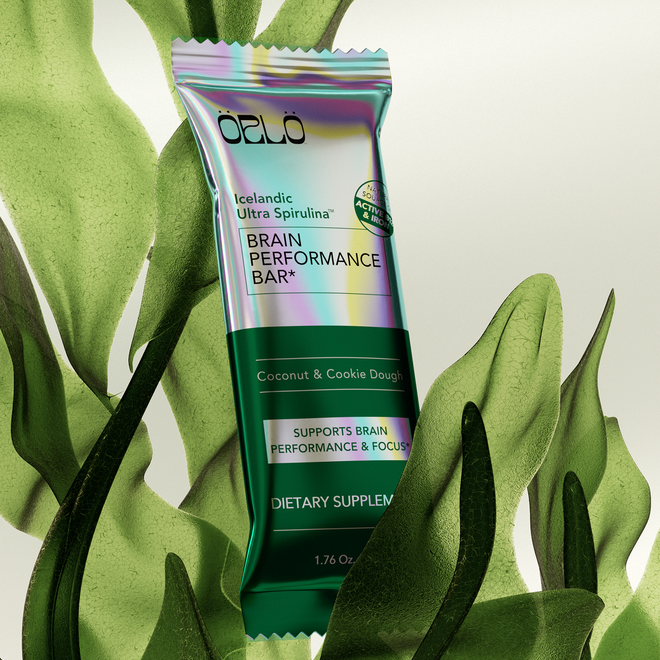Free shipping on purchases over $69
How Not To Age: Understanding The Science Of Reversing Decline With Dr. Michael Greger
Watch the episode here:
Listen to the episode here:
Curious about the secrets to aging gracefully? Tune into this episode, where Corinna Bellizzi
welcomes the renowned Dr. Michael Greger, author of the new bestseller How Not to Age. Dr. Greger's approach combines cutting-edge science with practical tips, making complex nutrition easy to understand and even fun to learn. In our conversation, we dive deep into the myths surrounding aging, the power of a whole-food, plant-based diet, and the surprising health benefits that can help you live a longer, healthier life. Dr. Greger also shares insights from his groundbreaking work and offers simple strategies you can start today. Don't miss this enlightening discussion that could transform your approach to aging and wellness!
Key takeaways from this episode:
- How a plant-based diet can promote longevity and prevent age-related diseases.
- Debunking common myths about aging and nutrition with evidence-based insights.
- Advice on incorporating more plant-based foods into daily meals and making sustainable dietary changes.
- The importance of combining diet with physical activity, stress management, and social connections for overall well-being.
Guest Social Links:
NutritionFacts.org: https://nutritionfacts.org
Dr. Michael Greger’s Website: https://drgreger.org/
--
How Not To Age: Understanding The Science Of Reversing Decline With Dr. Michael Greger
Welcome to another interview episode of Nutrition Without Compromise. I’m thrilled to be joined by Dr. Michael Greger to talk about his new book, How Not to Age: The Scientific Approach to Getting Healthier As You Get Older. It joined his earlier books, How Not To Die and How Not To Diet as an Instant New York Times bestseller. If you haven’t read these books, you may already be familiar with his work through his podcast, Nutrition Facts, and his not-for-profit of the same name.
What I love about Dr. Greger is that he makes complicated nutrition science easy to understand and even fun to learn. I had the pleasure of seeing him speak and had him sign my copy of How Not to Age a few months ago in Santa Cruz. Before I bring him up to the stage, remember this show is for educational purposes only. The information we share is not intended to treat, diagnose, or cure, and no patient-to-provider relationship is formed between you and me or our guests. With that out of the way, I’m going to bring him right up. Dr. Greger, welcome to the show.
How are you doing? Santa Cruz was such a fun event. There are a lot of fun people in Santa Cruz.
I was so sure we were going to be completely rained out because it was storming like you would not believe. The house was packed and people were thrilled to get to see you speak and learn more about whole foods plant-based nutrition and what it could do to change people’s health. As we get started, I wanted to offer you the opportunity to share what inspired you to double down and write this book after the two prior.
How Not To Age
You remind me a little of my last book on weight loss, How Not to Diet. Both the diet and anti-aging industries are these multibillion-dollar behemoths. With so much money in the mix, the temptation to promote products and all sorts of preposterous claims is irresistible. Even an educated layperson trying to find basic practical advice in either arena, living lighter or longer, is faced with an incredible barrage of pills and potions.
Even as a physician with the luxury of waiting neck deep through the peer-reviewed literature, it has been a challenge to tease the naked truth and separate facts from farce. I’m afraid that a casual observer would have no hope. That’s the kind of book I like to write because I want to cut through all that nonsense and get to the truth.
I very much enjoyed the audiobook version, as well as having How Not to Age on hand as a reference because you get deep on particular subjects. As I was waiting in line, one of what I would call your uber followers shared with me, “You read the last book. This one, I’ve already read and it’s way more dense.” What she meant by that is it’s a primer on so many of the subjects that you’ve already touched on. The detail here is quite expansive. I found it to be really interesting. I learned about things like fisetin that I had no knowledge of before. I didn’t expect to learn so much new, which is always nice to see.
I learn as much as anybody else writing these books as people get reading these books. I wasn’t taught about this stuff in medical school. There were entire fields of medicine or entire fields of science like the microRNAs that weren't even discovered when I graduated from medical school. It was a huge amount of fun to learn about all this stuff. As I was reading them and as I was studying these topics, I realized, “I can’t wait to share this with everybody.” It took a couple of years but eventually, it all came out. People seem to be benefiting. It’s not exactly poolside beach reading but there’s a lot of good information there.
Aging Myths
I wonder if you could share with us what some of the most surprising or impactful findings might have been while you were writing this book. Are there any myths about aging that you think could aim to help us debunk?
There is so much. There are so many surprises. Surprisingly, the exercise chapter was controversial. Sleep, red wine, resveratrol, NAD supplements, vitamin D, fish, protein restriction, microRNAs, the list goes on and on. It was shocking. I went in thinking one thing and came out thinking another thing. The biggest myth is probably the protein issue. When it comes to protein and aging, less may be more.
Reducing protein intake, meaning restricting protein down to recommended levels of intake, these are the only things that I could find that could help block all eleven of the aging pathways. It’s by boosting immunity, improving immunity, decreasing oxidative stress, inflammation, and insulin resistance, as well as canceling promoted growth hormone at IGF-1.
Surprisingly, there is no benefit to adding extra protein to the diets of older men and women in terms of muscle mass, muscle strength, and muscle performance. Instead, the excess protein most Americans get causes a drop in the pro-longevity hormone, FGF21, dropping testosterone, worsening the age-accelerating hormone at mTOR. We should try to stick to the recommended level of 0.8 grams per healthy kilogram body weight, which comes out to be about 45 grams a day for the average-height woman and 55 a day for the average-height man.
There's no benefit to adding extra protein to the diets of older men and women in terms of muscle mass, muscle strength, and muscle performance.
It’s important that you mention healthy body weight. The way I’ve heard this shared by other professionals is to say what your ideal body weight would be. If you know your ideal body weight for your body type and height along those lines, let’s say it’s going to be 150 pounds for ease of reference, then your daily consumption of protein for that body weight would be around 45 to 50 grams a day.
0.8 times 150 is 120.
You have to do a kilogram conversion.
You’re doing pounds. For pounds, it is 0.36, so 0.36 times 150 is 54 grams.
It’s a lot less than the 100 grams that a lot of nutritionists might even tell you you need to consume.
Those nutritionists are trying to sell you protein powders, shakes, or God knows what.
Let’s talk for a moment about protein. You mentioned some of the surprises around fish and whether or not it was necessarily a healthy protein source. What did you learn there?
Unfortunately, our oceans have become humanity’s sewer. Everything eventually flows into the sea. If we had a time machine to go back to before the Industrial Revolution, it might be one thing, but the aquatic food chain has accumulated the highest levels of chemical pollutants like DDT, PCBs, and dioxins. In the US, hundreds of thousands of babies are born with brain damage every year because their mothers ate mercury-contaminated fish during pregnancy with a resulting loss of intelligence estimated to cost our nation billions of dollars of lost productivity every year. A tuna sandwich would still be better than a bologna, but a hummus wrap would be even healthier. Harvard researchers found that even a 3% swap from fish protein to plant protein is associated with a 6% decreased risk of premature death.
Whole-Foods Plant-Based Diet
That is significant. We had another surprise that came, but it’s perhaps not a surprise to you. In June 2024, Dr. Dean Ornish published a study on the potential of whole foods plant-based diets, and lifestyle interventions to reverse early-stage Alzheimer’s. It has generated quite a lot of interest in the medical community. I’ve been paging through it as well.
Can you share your thoughts on that study and also comment on the protocol? He included quite a few supplements, which I know typically, you don’t recommend. He included Omega-3s, EPA, DHA, curcumin, probiotics, multivitamin, multimineral, CoQ10, vitamin C, vitamin B12, magnesium, and Lion’s mane, which to me seemed like a lot. I’d love your perspective overall.
I wasn’t surprised. I was usually surprised. Everybody was surprised. If you had asked me if we were going to see an actual benefit like a reversal of the decline of cognitive function in Alzheimer’s, I would’ve thought you’re crazy. Dead brain cells don’t come back to life. You can reverse heart disease, open up arteries without drugs and surgeries, just a plant-based diet and lifestyle program, as well as reverse the progression of early-stage prostate cancer with the same plant-based diet program.
For Alzheimer’s, that was a gutsy move, and it paid off. About 40% of those randomized plant-based diet and lifestyle groups showed a reversal of progression. They ended up with better cognition and function six months later than they did at the beginning of the study for people with early-stage Alzheimer’s disease. It wasn’t just a plant-based diet. There were supplements. There was exercise, like walking half an hour a day. There was stress management, like breathing exercises.
There were relaxation exercises and social support. This was done mostly over the pandemic. It was Zoom meetings to support each other to stick to the path. They were given food to improve compliance. They were given healthy food and had it delivered to their houses. Whether this could be replicated in the real world where people are walking past the donut shop every day and may have various temptations is not clear, but it shows at least the more you comply with the diet, the better you see the results.
Given that we’ve spent, as a global society, billions of dollars on Alzheimer’s drug studies and not shown nearly as good of effect in the long haul and ultimately only seeing something like a delay in how quickly somebody ends up in a nursing home, not necessarily a reversal of progression, it’s something to watch.
There were only 51 patients, I believe, who were assessed over this program. I know he’s also working with insurance providers to try and get to a space where some of this is included in the protocol, which could be interesting and could help a lot of people. I lost my grandmother to Alzheimer’s so it’s something that touches me personally and I know it touches many in our audience as well.
It’s a healthy diet. The side effects are good. Worse comes to worse, you become healthier.
As far as getting back to this conversation of what it would take to integrate a whole foods plant-based diet to optimize your health, a lot of people come to this first question, “What about protein? Where are you getting your protein?” They’ll say things along those lines and ultimately feel like they need to get their protein from animal sources because they’re somehow not going to get the broad spectrum of these important proteins, essential amino acids from plant bases. Can you comment on this and perhaps elaborate on how and why plant-based sources can meet our nutritional needs, especially as we age?
All essential amino acids come from plants or microbes. None come from animals. That’s why they’re called essential. Animals such as ourselves can’t make them. We need to get them into our diet. We can cut out the middle move by getting them straight from the plants themselves. This concept of protein quality is only relevant in the context of protein deficiency.

The 90% of Americans reach the RDA for protein and the 3% that don’t are probably on severe restriction diets or not eating enough food overall. In a famine context where there is that bloated belly syndrome across your core, which is this combined protein-calorie malnutrition, in that kind of situation when there’s not enough protein, then getting protein that more closely resembles our own is preferable. The highest quality protein is cannibalism, but beneath that, any animal will do.
All plants are complete proteins. They have all essential amino acids, but some of them are limiting if you’re not getting enough protein overall. Outside of a famine context, the quality of the protein should reflect the clinical effects, in which case, plant proteins are far superior. We’re replacing 3% of calories from animal protein with plant protein associated with a 10% decreased risk of premature death in the largest prospective study on diet and health in history. In the Harvard Cohorts, plant-based protein beat out every type of animal protein including fish, chicken, and dairy for decreasing mortality risk, so it’s not a fair fight.
I’ve heard Simon Hill state plainly that every plant has every essential amino acid. It’s a matter of which amino acids they have present. We don’t necessarily need to go to rice and beans to get a complete protein, at least that’s my understanding presently.
Your body will combine all the proteins you need over days. If on one day, you eat more of one essential amino acid and then on other days, you get more of another, your body is way too smart to be fooled by that. You end up with all the amino acids you need for protein production.
You work hard to make it as simple as possible for people to adopt a lifestyle that includes more whole foods and plant-based nutrition, including offering what you call your Daily Dozen. Would you mind summarizing that so people can understand it? Does it necessarily have to be very hard to adjust their diet and lifestyle to include these healthy foods?
My Daily Dozen checklist of all the healthiest of healthy foods and curse people to fit into their daily routine is available as a free app on iPhone and Android. It’s called Dr. Greger’s Daily Dozen. It’s not just vegetables every day but dark green leafy vegetables, which are the healthiest type of vegetables. It’s not just fruit every day but specifically berries, the healthiest fruits.
Legumes, beans, and lentils every day. A tablespoon of ground flax seeds with a quarter teaspoon of turmeric. It includes the best beverage, the best sweeteners, and how much exercise to get. I’m trying to inspire people to include some of these healthy behaviors to remind them of some of the healthiest things they can do on a day-to-day basis.
Spermidine
One of the things that I’ve personally done to get those daily dozen in is mill some flax seeds in the morning. I use the wheat germ because you talk about spermidine and how it’s asynchronous. Why don’t you tell people what spermidine is and why we want to make sure we’re having whole wheat as opposed to refined carbohydrates?
Spermidine is an autophagy activator. Autophagy is a housekeeping process within our body. It’s cleaning the system from the inside out and clearing away accumulated cellular debris that may be contributing to the aging process. The reason why coffee drinkers live longer is because the chlorogenic acid, the primary antioxidant in coffee, is an autophagy activator. In terms of food, out of thousands of compounds found to extend lifespan among the small subset with the fewest side effects, spermidine has the longest documented lifespan extension period across the board.
Where is spermidine found? It’s found concentrated in wheat germ. Above all, in terms of a per-serving basis, Tempe, a fermented whole soy food, is number one. Plain white button mushrooms have a lot, as well as soy foods in general and green peas. Mangoes are the highest spermidine-rich fruit. I encourage people to get 20 milligrams of spermidine in a day from spermidine-rich foods. One way you can do that or contribute to that is mixing wheat germ with your ground flax every day and sprinkling it onto your foods.
That’s exactly what I do. I put it into a protein shake along with my berries so I’m sure to get those things knocked out every day. I also put cranberries in there because I like a tartness to my food. That is also supposed to help with your urinary tract health and can even, as you point out in your book, help reduce things like the tendency to pee when you sneeze.
Urinary incontinence.
The number of tips and tools that you provide with this book is incredible. Even for those people who don’t necessarily go out and read through the entire book, you work hard to make this as digestible as possible by providing other resources on NutritionFacts.org. Short-form videos are available. I want to say thank you because it has helped me to explain to my husband my choices to go to a whole foods plant-based style of eating because he was skeptical and didn’t necessarily want to support all of that choice. He still does consume meat but I am mostly plant-based at this point. It has helped me even find certain recipes that work for me. I’m combining dinosaur kale with lentils and beans and making some interesting stews.
You’re making me hungry.
Personalized Nutrition And Medicine
It’s really good. I’m learning to cook in new ways, and a lot of that has come through your work. Thank you for that. I wanted to also touch on dietary trends like the low-carb, no-carb keto, and carnivore diets for those plant-based skeptics. You’ll often hear things on other shows along the lines of, “This is healthy for this individual.” I wonder if you have a perspective on this. What are your views specifically on these other diets in terms of their long-term health effects and their sustainability? Is it possible that there could be a healthier option for some people?
This whole concept of personalized nutrition and personalized medicine, that’s how you make money. No one is willing to pay for generic advice like, “Eat your greens,” or whatever. If you take a swab of someone’s cheek, read their DNA, and put it through the fancy machines with digital readouts or they do some metabolomic and some blood samples and then say, “Based on your unique genetic makeup, you need to eat greens.”
If someone is going to eat greens under those circumstances who ordinarily wouldn’t, you could argue that it’s worth them paying hundreds of dollars for some advice that you didn’t need to pay anything for. You could argue that that’s worthwhile, but it’s scammy nonsense. There are small differences between some people who are lactose intolerant and some people who are not. Some people metabolize caffeine more or less efficiently.
When you go to the zoo, there’s a diet for aardvarks, a diet for zebras, and a diet for gorillas. It’s not like, “That zebra gets a different diet than that other zebra.” There’s a zebra diet like a human diet that is most helpful for us with very few exceptions. That’s not how you make money, but it’s the truth of the matter.
These trends like low-carb diets, this is like the ‘70s with the Atkins diet. These come back over and over again. People love hearing good news about their bad habits. Who doesn’t want to eat butter on their bacon or whatever it is? The problem is that those eating even lower on the carbohydrate spectrum live significantly shorter lives. The goal of weight loss is not to fit into a skinnier casket even if these were sustainable in the long run.
The goal of weight loss is not to fit into a skinnier casket.
To your point, in a lot of the content you put out there, if you do eat this way, you’re maybe eating a much larger bulk of food but the calories are of a different quality. You’re getting more fiber, which supports the microbiome, and you’re also ensuring that you get a wide array of micronutrients if you’re doing things like covering the Daily Dozen. That’s integrating beans into your diet in creative ways throughout your day. I even followed your advice of putting white beans in my oatmeal in the morning. I didn’t even notice them. They are delicious.
You mush them right in and you have no idea.-
Whether it’s sweet or savory, it didn’t impact the texture or the flavor. You get more protein and more fiber, and it’s healthy. There are some good ways to do this. I’m curious about your thoughts on where we’re headed in the future of nutrition. Looking ahead, what do you see as the most promising areas of research in the field of aging and longevity?
Future Of Nutrition
There are so many juicy unanswered research questions. Many of these things are unpatentable natural substances or foods that no one can make any money, so it’s very difficult to get funding. There are people willing to raise funds like Dr. Ornish did for his Alzheimer’s reversal study, as well as nonprofits that are willing to contribute. Hopefully, there’ll be more of that research.
With all of the chronic aging diseases, hopefully, we will get the tame trial underway to see if we can get the FDA to recognize anti-aging as an indication for treatments. Otherwise, if it’s not reimbursable or it’s not billable, it’s ignored by the medical profession. That was the big push behind labeling obesity as a disease because then all of a sudden, you get more research dollars. Similarly, if aging was considered a disease, hopefully, our research stalls would flow in the same direction.

So little is spent on fundamental aging research whereas it’s a primary risk factor for almost all of our leading killer diseases. It dramatically increases the risk of cancer, Alzheimer’s, heart disease, and stroke as we get older, yet very little is done to treat the underlying cause. Instead, we play whack-a-mole by treating individual diseases. By slowing the rate of aging, presumably, we’d be able to reduce the risk of various diseases all in one fell swoop.
In your world, you would like to see us classify it as something like a disease.
Only because it would increase funding opportunities. If we could do that without calling it disease, I don’t care what they call it. What we need to do is to put more research emphasis because it plays such a pivotal role in so many of our killer diseases.
To your point, often energy goes where the money flows. That is true of things like research in the nutrition sciences, but it’s also true in the world of things like supplements. This is brought to you by Örlö. We play in the space of Omega-3, particularly algae oil. I know you do recommend a couple of supplements, generally speaking, because they tend to be so depleted in our diet. Where do you stand on the supplementation overall? What’s reasonable? What do you like to see if you’re connecting with people in your world?
Supplementation
In general, we should try to get our nutrition from the produce aisle, not the supplement aisle. There are two vitamins not made by plants. One is vitamin D, which is made by animals such as yourself. When you walk outside, it’s the sunshine vitamin. If you’re getting inadequate sun exposure, you may want to supplement your diet with 2,000 international units of vitamin D3 a day.
The only other vitamin not made by plants and not made by animals either is vitamin B12. It’s made by the microbes that blanket the earth. We used to get B12 drinking out of a mountain stream, well water, or something, but now, we chlorinate the water supply to kill off any bacteria. We don’t get a lot of B12 anymore in our water. We don’t get a lot of cholera either. It’s a good thing we live in a nice sanitary world.
Our fellow great apes get all the B12 from bugs, dirt, and feces. I prefer supplements. We should take 2,000 micrograms once a week of cyanocobalamin, the most shelf-stable form of all the B12 that most of us need. It costs about $5 a year. We should probably consider 250 milligrams of a pollutant-free algae-based DHA every day for cognitive health, particularly for older men.
You can get your Omegas from algae. You don’t have to go to the fish. For so long, we were showing people, “If you eat your salmon, your sardines, and your fatty fish, you’re going to get the Omegas you need.” To your earlier point, that is tough to do. Some of the science is pointing to the negative impact of consuming fish, so we need to be careful on that front as well.
I was hoping as we round out the final stage of our interview, and I wish I could have you for longer but every moment is cherished, if we could talk for a moment about how our audience looking to incorporate your advice can practically do so. Are there some simple everyday changes that they can make today to support healthy aging perhaps while you’re on the topic?
Absolutely. We don’t need to make drastic changes. It’s not all or nothing. Even basic common-sense lifestyle factors can mean living a decade longer, not smoking, not being obese, regular exercise, and more fruits and vegetables. It’s never too late to start eating healthier, stop smoking, and start moving. We do have the power.

I understand you are at a standing desk. I am too. Typically, you also have a walking treadmill underneath you. This is something that helps you get your steps in each day. Are there any other tips that you might provide our audience so that they could integrate a little bit more movement into the day?
I love my treadmill desk. The only reason I stopped doing it for interviews is because I make people nauseous. I keep bobbing side to side every day. I’m looking forward to turning my treadmill back on.
I could sometimes hear it in the background. You use it when you’re on the Nutrition Facts podcast.
I don’t want to make people motion sick. You can get a lot of steps in and can continue to do work. That’s the problem for me. There are lots of different ways to exercise, but the one that I can continue to contribute to the world at the same time is what does it for me. Do what you enjoy. It’s all about what’s sustainable. Walk your dog. Go with friends. Play sports. You don’t have to white knuckle it to do it. You enjoy the activity. Walk in the woods, etc. so that you can keep it up long-term.
That’s fantastic. Thank you so much for joining me. I’ve so enjoyed this conversation. If you have the time to stick around, I would ask you to for the close, but I understand you’re quite busy and you run these interviews back to back.
I got to run. Thank you so much. Have a fantastic day.
Have a fantastic day.
Keep up the good work.
Thank you.
‐‐‐
It’s so nice to hear these insights directly from Dr. Greger. I have had him in my ears for quite some time, both narrating his book, How Not to Age, and also on his podcast, Nutrition Facts, which is available on any platform. I find that his short-form podcast episodes are very informative. They help me stay on top of the research in that particular arena and also further ratify where I am on my health journey.
What I’ve presently learned is a few things. For one, I can maintain my muscle mass on a fully plant-based diet. I have been plant-based, whole foods, and almost no oil, but I still use a little bit of oil in cooking, since the beginning of 2024. What I have seen is that I’ve been able to maintain my weight and build some muscle. I have one of those special scales that helps me see what my fat and muscle weight are, as well as my water retention. I’ve also seen that I am feeling as healthy and strong as I did before.
There’s one more surprise that I have noticed as well, and that is that I am able to lift more. I didn’t anticipate that. Typically, I’ve only gone up by about 5 or 10 pounds in a month or two, depending on the exercise. I have gone from 50 pounds assisted on my pull-up down to only 30 in a few months time. I have never been able to achieve that even when I weighed less. That goes to show you I’m lifting much more, feeling stronger, and feeling more energetic.
Another thing that I noticed is that I was able to adjust my thyroid medication. I knew that there was something happening there because I started to feel like I was a little hot. I wasn’t sleeping as well at night. I had my levels checked and I learned that I didn’t need quite as much medication, so I was able to adjust that down. My long-term goal is I would love to be able to be off of it.
The other benefit was my body temperature, which is also a sign of my metabolic health. My body temperature has been at 97.2 for the past fifteen years. That’s my normal. For the first time, my normal is 98.6, and that is ever since I was diagnosed with hyperthyroidism back in 2009, so fifteen ago. These are an N of one. This is my experience. This is not broadly clinically studied, but it makes sense that by making adjustments to my dietary choices, my hormones would be impacted too.
For me to attain my healthiest levels of Omega-3s while I’m going through these particular changes, I also have had to double down on my Omegas from Örlö Nutrition. Instead of just taking 2 soft gels a day because I consume no fish now, I take 2 doses of 2. That has brought me to an overall level of 7.95% on my Omega-3 index. That’s as close to 8% as I’ve ever been even when supplementing.
8% to 12% is the ideal range if you want to see a drop in all-cause mortality. That has been shown by the Framingham Research study, which is multi-generational. They’ve tracked people over decades to see what the healthiest levels of Omega-3s are. I’m getting there with two doses of Örlö’s Omega-3s each day. I’m assured of the fact that I’m absorbing them because I can see it in the test results.
I wanted to share with everyone on the heels of this conversation that Örlö is running a very particular promotion. We have been working on this project for about the last year as a pilot program to see how our customers do when they start consuming our Omega-3s, where they are at their Omega-3 index at the start of supplementation and after 4 to 6 months of supplementation.
What we’ve seen is that 97% of our consumers are seeing a measurable increase in their Omega-3 index. Some of those individuals may have been taking fish oil before and are now taking algae. Others may never have consumed an Omega-3 supplement, but 97% of these individuals are seeing measurable improvements. I went from about 4.5% Omega-3 index to 7.95% from taking a couple of doses of these a day.
I would encourage you to participate in this program because Örlö Nutrition is covering the costs of the testing. We’re running a six-month promo. You can go to OrloNutrition.com and participate in the Tested by You program. Go buy one set of six months' supply of our Omega-3s, and with that, you’ll get 2 Omega-3 index tests. That helps you see if this can work for you too. Beyond that, I would encourage you to follow the work of Dr. Michael Greger. He is a wealth of knowledge. He will help you figure out exactly what you need for you by offering you third-party clinical studies that support everyone’s nutritional health.
At this point, I want to thank all of you for joining me. With that, I want to ask all of you to join me as I get ready to say my closing words, but there’s one more thing. If you use our coupon code NWC at checkout at OrloNutrition.com, you will qualify for an extra 10% off. That would even apply to the six-month supply. When you go to OrloNutrition.com, if you want to get that six-month supply of our Omegas and the 2 Omega-3 index tests, use the code NWC at checkout to get an extra 10% off.
That’ll be even more of a savings. That brings a total ticket in at right around $180 delivered, possibly even a little less, which means 2 tests are at a $100 value, each 1 is $50, and a 6-month supply of the Omegas at a discounted rate. It’s a fantastic program. With that, I hope you’ll join me as I say my closing words. Here’s to your health.
Important Links:
- Dr. Michael Greger
- How Not to Age: The Scientific Approach to Getting Healthier As You Get Older
- How Not To Die
- How Not To Diet
- Nutrition Facts
